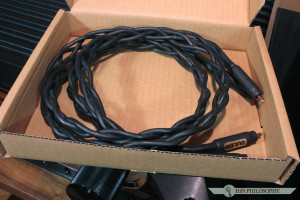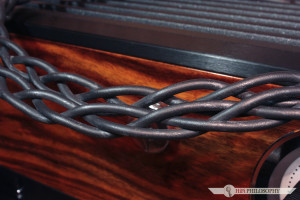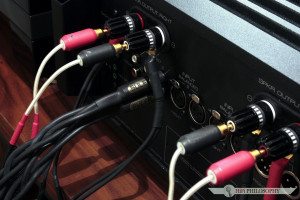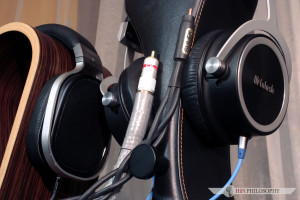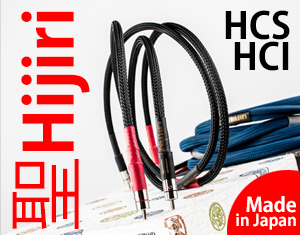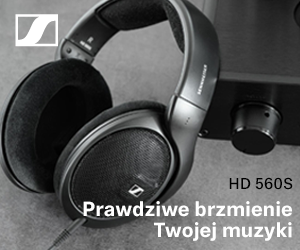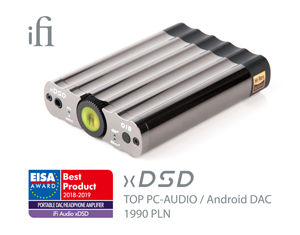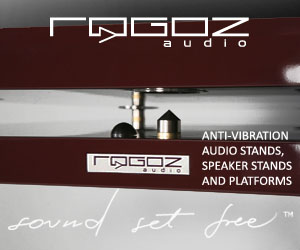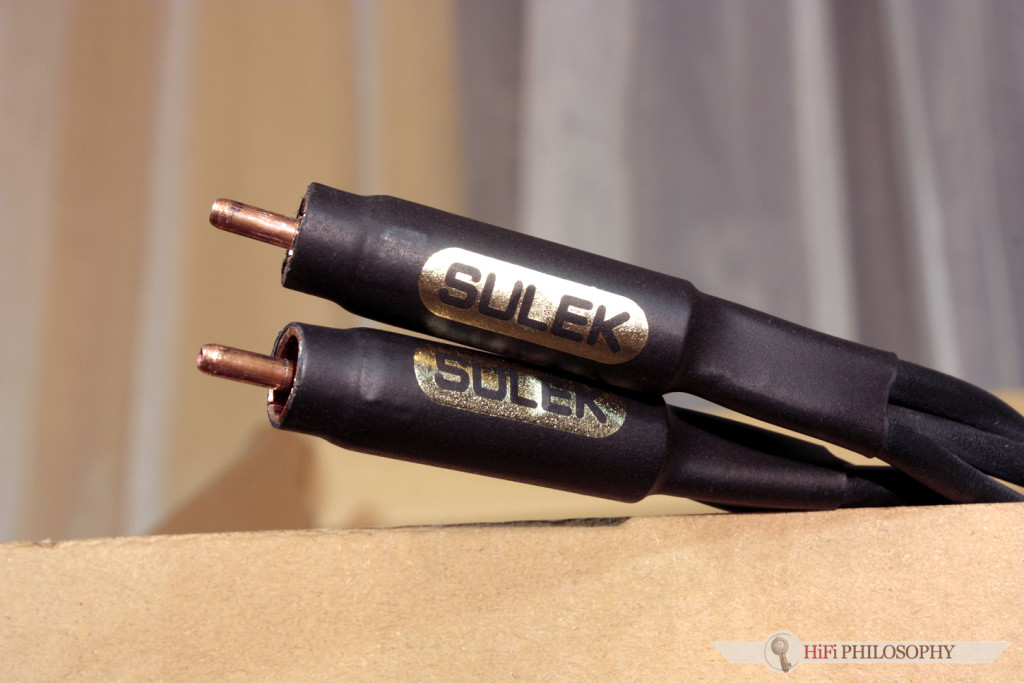 It seems that reviews praising some equipment pop up one after another. There’s something to it. On the one hand, the manufacturers do their best so the market is generally improving. On the other hand, the reviewers choose carefully so they don’t have to deal with rubbish. And should the need arise, negative reviews would be flowing. But what’d be the point? The intense urge to criticize something appears only when the thing is aggressively advertised, or even worse, comes from a renowned producer, and is simply not worth buying. So there’s a genuine concern that consumers would give in and get fooled. Such a situation is a good reason to give people a warning, whereas the rest of the market junk should be passed over. What should not be passed over is the novelties, especially debuting, that offer something really interesting. This is such a case, because this review is about interconnect cable from Sulek Audio, a debuting brand. I had the pleasure to write the first review of this cable. The Sulek Audio RCA IC.
It seems that reviews praising some equipment pop up one after another. There’s something to it. On the one hand, the manufacturers do their best so the market is generally improving. On the other hand, the reviewers choose carefully so they don’t have to deal with rubbish. And should the need arise, negative reviews would be flowing. But what’d be the point? The intense urge to criticize something appears only when the thing is aggressively advertised, or even worse, comes from a renowned producer, and is simply not worth buying. So there’s a genuine concern that consumers would give in and get fooled. Such a situation is a good reason to give people a warning, whereas the rest of the market junk should be passed over. What should not be passed over is the novelties, especially debuting, that offer something really interesting. This is such a case, because this review is about interconnect cable from Sulek Audio, a debuting brand. I had the pleasure to write the first review of this cable. The Sulek Audio RCA IC.It all started when a familiar audiophile brought me a black braided cable with hand forged copper connectors on both ends and asked if I could try it out. I could, so I did. Reluctantly, at first, just to get over it. But at the moment at my computer there was a very cable-unfriendly set, that is, one that is really demanding. It was Mytek Manhattan with Trilogy 933 headphone amplifier. This combo of clarity and detail is very strict and demands superb connectors. One step below top quality – especially when it comes to elegance and overall musicality – and it’s not good enough. This is how without paying much attention, the cable was put to a difficult test, and that’s when I got perplexed. I’m not going to tell you just yet what perplexed me, but from this moment, taking it all serious now, I realized that I might get this cable for testing, providing both me and the manufacturer agree to that. I accepted the deal right away, and the manufacturer gave a green light a few weeks later. In the meantime I was left without the cable, because the friend took it with him explaining that it was just a working version that will be further enhanced. – Gibberish, you want to have it for yourself – I thought, but I just nodded understandingly, because I knew well why wanted it. One week ago, the final version was officially delivered by courier, together with a review request. Therefore, fulfilling the request, I am herby writing the review.
The premiere of Sulek Audio cables has been already announced on a few internet services, such as “HiFi Choice.” On the occasion it has been mentioned that the cables will be available in Gdansk HiFi Ja i Ty store and that the brand is also from Gdansk and is named after its founder – Wieslaw Sulek.
The story of Sulek Audio company is very typical and modest, but its ambition is very high. The cables have been created after many years of experience. At first, the founder produced things just for his own use, but over the years he gained experience, polished his abilities and, what’s most important, compared his cables with others – especially renowned ones – and that’s what inspired him to go into commercial business. What gave him additional boost of self esteem was the encouragement from the first users and audiophile friends, who all loved Mr. Sulek’s cables. Mr. Sulek, I love you! – they all repeated, just like a lady in a famous radio show I once listened to on Polskie Radio Program. (By the way, dear God, whatever happened to the Polish radio in the last few decades?)
Sulek Audio cables are not the kind promising that for a few hundreds they will play better than those that cost a few thousands. It’s not like that. Here I will disappoint all those who hope for another drama story about backyard labs where, with the amazing talent (especially for bragging) of the creator, cheap spool cables are turned into interconnects outclassing even the most expensive ones. The only true part is the one about outclassing, but not to exaggerate. It’s fair to say that Suleks will not outclass us such, but rather will be on a level playing field, winning in many aspects. This is anyway what they are supposed to be.
Because Sulek Audio doesn’t need bragging or making up stories. On its own level, it holds ground. In a moment I’ll give you some comparisons and will tell you what it’s like. And its going to be good – I promise. I don’t have such good news when it comes to price and packaging though. The latter is rather simple and consists of a cardboard box. I won’t even compare it to the most sophisticated brands with their elegant boxes lined with velvet or satin, with fancy opening. Sulek’s boxes, just like Tellurium Q cables or electronic parts from Schiit, are simple and eco. Just cardboard. Because, really, what do you need a fancy box for? You won’t be listening to that, unless you tap it with your fingers or bang your head with it. Such fanciful packaging is for spoilt customers who feed their inflated ego on the meadows greening with dollars. Admittedly, a beautiful packaging is nice, because we automatically expect to find something nice in it, so in a sense it is a justified means of improving the customer’s experience and their approach towards the product. But only on condition that most customers could afford the cost, and it’s a far cry. Therefore, esthetically and mentally it is justified, but economically it is unreasonable – a classic dissonance.
Sulek cable itself also is not trying to win people’s hearts with its look. It is a hand-made braid of three cables in black insulation (comes also in white), not decorated with any cool-looking braid. No sparkle, no glitter, no fur or snake skin. A plain insulated wire. Only that it’s not that plain, but what’s special about it, you cannot see. You can, however, feel it in your hands, because it’s really heavy. It is not a cable made of thinnest wires, but of high quality copper, braided into a solid piece. The connectors constitute additional weight as they are custom made, forged from copper, not bought in a store. As far as I know, there are no copper forged connectors on the market, so they are the exclusive products from Sulek Audio.
When it comes to technical details, apart from top quality copper, hand-crafted wires and forged connectors, Sulek Audio also places emphasis on direction. I was told it is a vitally important thing, and is marked for the user with the lettering. The signal follows »Sulek« inscription from “S” to “K”, and it follows it not only horizontally, but also vertically. This means that the cables should be plugged in such a way that the »Sulek« inscription, visible on each connector, is facing upwards. The rest is listening. Apart from one thing. The price.
I’ve already mentioned that the cables aren’t cheap. They don’t offer you ultra quality for a dime, not even for a thousand. One meter long pair of Sulek Audio interconnects is the cost of six thousands PLN. Having heard that, you might think this is crazy and argue that for this amount you could choose among plenty of premium brand interconnects. But Sulek remains indifferent to such arguments. Go ahead and choose if you like! If you want to listen to inferior, but branded sound, be my guest. Sulek defends itself with comparison and ostentatious calm, as well as the fact that it is bought by professionals ready to wait in lines to get it. Sulek didn’t push to get on the market, he has been pushed. He has no claim to fame, no exotic origin, a list of celebrity users, renowned name, years of experience, prizes, reviews or advertising. Nor is he cheap, with good-looking packaging, exclusive design and is not promoted by some renown distributor. Sulek stands on his own, but he doesn’t fear comparisons. So lets compare.
Listening
I decided to test the cable in a few locations, so that there’s no doubt. I started with a typical modern option, that is, a headphone amplifier connected with a transducer. The transducer was the tried and true Phasemation HD192 with its amazing K2 processor, whereas the amplifier, also tried, having good opinion, Sugden HA-4. It would make no sense to listen to them with just Sulek, so I brought two other interconnects and two pairs of headphones. The interconnects are the old time heroes, one I still use, van den Hul First Ultimate, with its pleasant warmth and high culture that can smooth out even very rough device issues, the other also from the same price level, costing about six thousands, and for contrary in silver, Acoustic Zen Silver Reference. The headphones I picked also are contrasting, on the one hand I brought the calm OPPO PM-2 model with spacious sound full of air, on the other super clear, super dynamic, sparkling and very fast McIntosh MHP1000.
At the computer
For a start, lets take van den Hul. All about it met my expectations, it played well, with high culture, so if I didn’t want to make any comparisons, I would simply accept the fact of listening to a great headset in two different versions, the versatile characteristics of which I presented in the review of OPPO PM-2.
But comparisons are the core of audiophilism, and although some might say they consume too much time that should be devoted to music, without them our knowledge would be much limited. Tautologically, you might say incomparably limited. Therefore the power of comparison is visible even in the language, and when it comes to the cables, once again you could hear things easy to foresee. The silver cable from a high shelf (but not the top, occupied by Acoustic Zen) showed the typical advantages of silver – liveliness, dynamics, clear picture, flickering light with bright color and expression, both of music itself and the details. In a nutshell, you could feel the light and revived atmosphere. The sounds started to spark, the space expanded and gained some fresh air. Before that, it was stuffy and gloomy, although you couldn’t actually feel that. What dominated was the realism – so close and tangible – but only after switching the cables you could feel the freshness, gleam, faster musical pulse and higher amplitude jumps. OPPO headphones were very pleased by that, the cable suited them very well. Their spacious sound carried on the waves of air gained vigor and expression, and with all that the overall experience was what? Yes, that’s right – it was more thrilling. You simply listened to it with more pleasure, with more emotions. It wasn’t just good music – great even – but electrifying. And only in such a case you can say that something is really good and it’s really worth listening to. Or maybe it’s not? After all, time flies like an arrow. You just can’t break away, and other things are lost. As a result you can mess something up. I’m glad I don’t mess up in such situations, as listening to music is my profession. Good for me, isn’t it? But still, the listening session took far too long for diagnostic needs and I was running late. It’s just that the music was really outstanding.
The silver cable didn’t make such an impression on McIntosh headphones, which already have the liveliness, gleam, clarity and all the rest. There was a risk that these values will be multiplied and intensified to such a degree they will no longer be enjoyable. Luckily, it was not the case and McIntosh headphones with the silver cable played better than with van den Hul. But that’s just my opinion, I would say there was more action, whereas someone preferring rather calm sound could pick van den Hul. I wouldn’t, but someone could. However, Acoustic Zen has been defended by DAC with its exceptionally spacious sound and the amplifier with exceptionally high culture with its pure A class that didn’t allow for any overdoing. The standard of excellent sound was kept, but OPPO visibly gained much more.
So now Sulek’s turn. And Sulek is just different. Made of copper – with all the characteristics typical of copper. But in a very good sense. To keep the order, again I started with OPPO which perfectly highlighted the differences between copper and silver, that is, copper played more dark, calmer, fuller, warmer with prolonged phrases. It’s like switching from twist to waltz or replace two dimensions with three. The comparisons are exaggerated, but they show the nature of changes. The changes made OPPO headphones switch from lively to calm sound, more distanced from first person. Away from personal jiggling around and towards admiring someone else’s beauty. Music was no longer vibrating ecstatically, it began to flow. The silverish dynamic foam has been replaced with iridescent waves of melody, carrying more weight. The style is a matter of taste, but I preferred the silver one. But just slightly, and at the same time it was more tiring and more demanding during very long sessions, but still spectacular. In contrast, the carbon van den Hul has been beaten by Sulek’s copper on its own field. Its culture, fulfillment, color, light, and most of all, space turned out to be worse. Somewhat diminished, without color, not deep enough. For the silver cable, it was no competition, although with other device configuration it would definitely pose a threat, but here, all three signal path components were to its disadvantage. Sulek’s copper, however, appeared to be a tough competition, and the longer I listened to it, the more I forgot about Acoustic Zen’s performance. I could feel smoothness, depth and melody. It was a superior sound in a calm, audially enhanced manner. Quite warm, but not overstated, outstandingly melodic, musically rich and expressed through long decay time of sounds bearing great intensity. Top class.
But the best is yet to be heard, because here comes McIntosh headphones. Such a difference, as they gained much more. Just like OPPOs were optimal with silver with its high dynamics, to the dynamic and spectacular McInsosh, the copper from Sulek Audio proved to be the missing link to perfection. It all played so spectacular that I was speechless. Well, well, my audiophile companion living in my head – this is it. Pure perfection. Momentarily – right at the beginning – there was noticeable holography. What OPPOs manifested as just longer decay and more centered listening position, here it was nothing short of magic on stage. The sounds attacked from different distances and you could hear the effect we call the miracle of space depth. It affected not only the scene, but also the sounds. They also have become cubical, and the tones were visibly flowing instead of just being sustained. And the sounds themselves… About them you could say they gained something you could compare to pouring them into a green bottle. Not that they’ve become green, but you know what I’m talking about. They’ve gained charm, lure, singularity, depth. It was magic, enchantment in the purest form.

Honestly, the exterior of the interconnect can not reminiscent of the most prominent representatives of this kind…
The distributor of Sulek Audio praises the cables, telling stories of how many cables thought to be outstanding he is given in exchange for them. I won’t drop names, because I haven’t verify that, but I can believe that an experienced audiophile, who is no longer impressed by names, because he already knows better than to fall for big names (it’s not the names that win the game, as our famous soccer coach, Kazimierz Gorski, used to say), without a blink would give away an expensive stuff from a famous brand once they’ve heard the superiority of the unknown cables. Because what good is a name when it plays worse? You’re going to wear it on your head? And the copper interconnect from Sulek Audio is indeed audacious and can knock much more expensive competition into a cocked hat. Once you plug it into the system, it kicks like a mule. I won’t say that it defeated the referential CrystalCable Absolute Dream, because it hasn’t. But first, it’s ten times cheaper, and second, the difference was rather slight. The crystal silver with superb insulation was somewhat clearer, more transparent and dynamic, but it was the same class, and the difference was mainly in style. At the same time, the two cables serve different purposes. The flagship CrystalCable is useful mainly where everything else is well optimized and you just have to expose it. Whereas Sulek Audio is perfect where you need to improve musicality, give sounds some depth, prolong the decay time, restore loudness, make the coloring more pleasant, chase away annoying brightness and unpleasant trebles. Let’s be clear. It’s not achieved through reducing, suppressing or manipulation. It works like a filter, often enhancing one, and as such it will improve, not suppress the clarity, and will harness the bandwidth and enrich the coloring. It won’t reduce anything, but it will improve what’s already there, at the same time highlighting what has been hidden before. It’s like a good charm, not a screen. It won’t take away anything or give something in exchange. The changes are only positive, which sounds unbelievable, but it’s true. For all this Sulek Audio demands six thousands and they get it. And not for a pretty face or just a braided copper cable.
Listening: At the CD player
From the computer, I moved towards the CD player, but at first I kept the headphones, only with their own amplifier. So the path, from amazing, has become extreme. I don’t want the review to be too long, so I won’t delve into the serious defeat of van den Hul and will focus on the two antagonists – the silver Acoustic Zen and the copper Sulek. I decided to stick to the OPPO and McIntosh headphones, hoping to see some interesting battle on this double stage. I wasn’t disappointed. Although in general, nothing new happened, except maybe for one thing, but I’ll go into details in a moment.
For a start I listened to OPPOs with the well-matching Acoustic Zen. Once again the headphones gave me true satisfaction and their style was outstanding. Out of curiosity, I compared them at random with AKG K812 and Sennheiser HD 800. It was a vicious fight which resulted in favor of OPPOs. Only when I used the referential CrystalCable (these comparisons are killing me), the playing field levelled, but still OPPOs were more direct compared to the two flagship models which were more theatrical, kind of more in the background, with more reverberation and not as natural vocals. But let’s stick to the point.
Without K2 processor, OPPO headphones were not such explicitly holographic, but all the other aspects proved to be much better. The magic of the tubes flowed through the silver interconnect like a golden river, but mainly as a kind of scenography, because what was most important was the airiness, the beautiful complexity of sounds and most of all, the naturalness of play. True perfection. The OPPOS are really outstanding. However…
McIntosh MHP1000 headphones are nothing short of remarkable too, which was audible from the first second. Right away they performed a backflip with double twist, leaving no doubt as to what they are capable of. The power interlaced with delicacy, mellowness with gleam, all this with extremely precise imaging and superb dynamics. The bass hit on the spot, the trebles flowed – a real parade of sounds. Nothing but to salute with Entrance of the Gladiators, or even better, Radames’ triumph from Aida by Verdi. As far as Acoustic Zen cable is concerned, it’s enough to say that with a more sophisticated device configuration, it proved to match MHP1000 better, without diminishing their performance. You could listen freely, even enjoy it, although compared to OPPO, it was more of a show off than natural play. But it was really great, because it was only trebles that were going a bit wild. They were overdoing it, both in quantity and quality. But not with crudeness – oh no. The trebles were spacious and melodic, but just somewhat too aroused. They were too concentrated and with too sharp contrast.
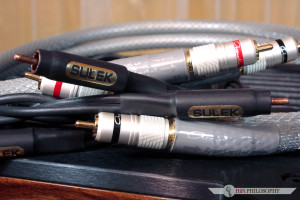
Certainly Acoustic Zen Silver Reference sounds and looks good at the same time, and it costs the same as Sulek…
So now Sulek’s turn. While listening to OPPOs it turned out that the better signal path enhances their cooperation with the copper cable – which is no surprise, it’s standard – but this time it was quite sneaky, which definitely was a surprise. When you switched from the silver, you got the impression that the sound gained loudness and has become more substantial, true, but there was also less air, which made it less spectacular. This impression, however, disappeared after a few minutes, replaced with the feeling of true realism, backed up by exceptional elegance. There was nothing new compared to the computer, but the changes happened on a different level, so they had greater influence on the imagination. It was a feast for audiophiles, for those who want the direct contact with the music and listen to it in the most friendly way, without any eccentric show-off. Precisely without all what I could experience a moment ago on MHP1000 headphones with the silver interconnect: all this flickering, edges as sharp as a knife and extreme contrasts. Instead, the sounds were spacious, extended, with gentle brightness, flowing rather than vibrating. With emphasis on the melodics, not dynamics and speed.
Again, I want to remind you that such descriptions use exaggerated words, so OPPOs didn’t sound like an elephant in slow motion, they were lively and spunky in the right moments, just with different proportions and accents. With emphasis on the melodics, sustain and soft envelope of sound, replaced with radiance, and not with sharp image, foreground speed and showy contrasts.
And now comes the best, that is Sulek Audio RCA IC with McIntosh MHP1000. The best for both, as the two have fallen in love at first sight. The headphones are not the subject of this review, just a means of testing, but since they produce the sound, their role is by nature more prominent. So lets summarize. The greatness of Sulek’s interconnect lies in the fact that it managed to get McIntosh trebles under control. At first I couldn’t believe it, and I had to go through many songs just to make sure. Oh-la-la!, oh-la-la! – went on a voice in my head. So Sulek, you are this kind of animal…
Cables can stir so many things up, so theoretically it shouldn’t be surprising, but still, I was very moved. I had to plug the silver interconnect again, and having listened to a few sopranos, I switched back to the copper one. Yes, indeed – there is a substantial improvement. You can’t even call that an improvement, this term doesn’t give it justice. It was like healing a mental illness. A miraculous recovery. The wild soprano peaks were turned into the sounds of instrument cavities, into normal strings, sounds devoid of the nervous excitement. Its like rewinding a tape with a vase breaking into pieces and putting it back together. A very pleasant feeling bringing full satisfaction. At the same time, the sound of MHP1000 moved closer toward OPPOs, but they retained their specific style. Because they are specific. Just like the sound of saxophone is different – consisting mostly of air movement, where harder, sharp fragments are like raisins in a cake – and bells or tight metal strings are different, where its not the air that dominates but rather short flashes and reverbs. Again, its an exaggeration, because these differences don’t correspond to the differences between OPPOs and McIntosh. However, the overall contribution of air sounds in OPPO is much greater, whereas McIntosh is rich in flashing, refined, on-point sounds. One of them have blurred sound boundaries, the other have them noticeable. So the sound in OPPOs is like a cloud, whereas in McIntosh like an ornament. That’s why OPPO headphones like sharper interconnects more, and McIntosh prefer plastic, cubic, smoothly molding interconnects with gradients.
And what about Sulek Audio RCA IC? Its closer to the second type, but with high quality equipment, it matched both headphones well, so it is highly versatile, although it is more focused on elegance and melodics rather that ecstatic show-off.
Listening: With speakers
With speakers, I could hear yet another difference. Namely, that Sulek Audio interconnect has inertia. That’s why one has to be careful with judgments about it, and the earlier, quicker comparisons turned out to be biased by methodological error. Because once it is plugged into the system, it plays calmly, most of all with full sound, and only after several minutes it starts to speed up. So its kind of like a train that accelerates gradually, but once its gains full speed, the fun begins. And it needs rather longer distances to achieve its full potential, like between Paris and Lyon.
Sulek played just like the phono stage from Audion with amplifier and speakers from Avantgarde, both for logistic and quality reasons. The large tubes are unbeatable, and together with the amp they preset a level that vast majority of audiophiles dream about before going to sleep. Again, I won’t delve into the attributes of the speakers and amp, I will talk about that in the review devoted to them, but about Sulek I’ve got to say that although at first it seemed to play calm, to the full, with beautiful depth, it quickly twisted to become extreme realism. At the beginning the brightness was softened, the dynamics manifested itself smoothly, you could feel a warm breeze, satisfying fullness and overall flow, with no trace of attack. Like music for a stroll, playing with dignity, like a grand river. Faster, more active notes appeared here and there only for a moment, with a ring or louder trumpet, but in general the atmosphere resembled a defilade rather than a race. Very enjoyable, even spectacular, based on overall power. But after several minutes it became clear that it can be much better. The pitch rose up and achieved ultra realistic level, everything gained speed, vigor, brightness and emotion. It exploded with sound, as if you opened the door to a jazz club and was overwhelmed with raging instruments. Everything was bustling with life and the scale of dynamics and quality of the sound itself was attacking with great force. Sulek, you bastard! So you can do such tricks? – I thought listening to that, amazed by the change.
Karol was totally right in his report from Paris, saying that this speakers and amp combo were the trade winner. I really regret that I cannot go into details right now, but I will get to it. Now I can only mention that it was truly super realistic, with whistling trebles rivalling with the powerful roar from active speakers. To be frank, I was surprised that with the interconnect from Sulek Audio it would play that good. I was counting rather just for the style audible in the first few minutes. For power, but suppressed, dignified and calm. And here I got pure realism, like an actual musician squeezed from the tube, and it all became different. But so much better! It was no longer an accompaniment in the background, but a true concert. Live and unplugged, with no processing. So, Sulek Audio RCA IC definitely can do. You just have to let it play uninterrupted, without switching it with competition for comparison all the time, then it climbs to a higher level. On this level it can combine the top quality culture and control over articulation with liveliness and dynamics. But the most important thing about Sulek is that it is capable of emitting sounds through its whole width. It doesn’t narrow or flatten anything – just the contrary – it deepens and widens. The result is trebles in their natural expansion and bass free of rumbling and limitations. And with it, human voices in their natural, completely unprocessed form, directly in front of the listener. Not only realistic and direct, but realistic and direct at the same time. Because being realistic and direct is not the same thing. Somebody’s voice can sound realistic, but from a distance and accompanied by reverb, and then it lacks directness. It can also be direct, because it sounds like it was close and acoustically unprocessed, but it has lowered or raised pitch, and then it doesn’t belong to the real person, which makes it unrealistic. It can also be unrealistic for many different reasons, for instance because of insufficient space, debased articulation, too much hissing, artificial softness or too much boost. The list of flaws is long, and each of them means deviation from the truth. Of course the truth is always in a sense arbitrary, because Truth is a big word and an extremely complicated philosophical problem, to which thousands of years of contemplation has been devoted. But now we don’t have to deal with it to such an extent. The truth of the microphone and concert is enough.
And this truth – the truth of satisfying the expectations of trained musical specialists – the interconnect from Sulek Audio can recreate really well. In addition, it possesses exceptional power of synergy, as it is well matched more often than not. To be honest, I haven’t heard it ill match anything, quite the contrary, it often matches equipment perfectly. So no wonder my friend who brought me the interconnect soon afterwards sold his own cable worth more than twenty thousands and left Sulek for himself. Good for him, I recommended that myself. The contrastive advantage of the Polish interconnect leaves no doubt.
Summary
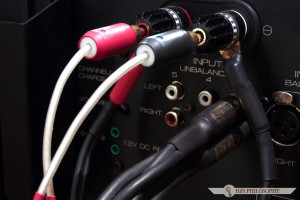 It’s a rare occasion to write a review of a high-end interconnect for six thousand zloty from a Polish manufacturer. There are not many people brave enough to compete with the world’s best and to prove their superiority. I’m hearing that Albedo will try that soon, but for now Sulek Audio joined the game, in my opinion, very successfully. They scored right away, on the first occasion. I’ve still got mains and loudspeaker cables to try out, but I bet they will prove to be outstanding. And the interconnect? To tell you the truth, it is difficult to describe, which is paradoxical, because at the same time it is very easy to use. It works well under any conditions, regardless of the style of the equipment or listener’s expectations. Of course, at times it is better, sometimes less spectacular, but still, it works well. And when it is as well matched as with McIntosh headphones or the loudspeakers and amp from Avantgarde, it performs a show that fully justifies its high price and makes the listeners jump to their feet to check whether their old interconnect has any chance to defend itself, or whether switching it for Sulek is simply vital, like Summer for windsurfers and Winter for ski riders. And I can give you audiophile’s word that I’ve heard with my own ears a cable worth over 20 k – the such with tradition, magical packaging, packed in a fancy box, with elegant braid – faced overwhelming defeat against Sulek. If it wasn’t the case, I wouldn’t be writing a review of Sulek interconnect. Why would I get myself into trouble for promoting rubbish. Lying is not good in this business. It’s good for other specialists.
It’s a rare occasion to write a review of a high-end interconnect for six thousand zloty from a Polish manufacturer. There are not many people brave enough to compete with the world’s best and to prove their superiority. I’m hearing that Albedo will try that soon, but for now Sulek Audio joined the game, in my opinion, very successfully. They scored right away, on the first occasion. I’ve still got mains and loudspeaker cables to try out, but I bet they will prove to be outstanding. And the interconnect? To tell you the truth, it is difficult to describe, which is paradoxical, because at the same time it is very easy to use. It works well under any conditions, regardless of the style of the equipment or listener’s expectations. Of course, at times it is better, sometimes less spectacular, but still, it works well. And when it is as well matched as with McIntosh headphones or the loudspeakers and amp from Avantgarde, it performs a show that fully justifies its high price and makes the listeners jump to their feet to check whether their old interconnect has any chance to defend itself, or whether switching it for Sulek is simply vital, like Summer for windsurfers and Winter for ski riders. And I can give you audiophile’s word that I’ve heard with my own ears a cable worth over 20 k – the such with tradition, magical packaging, packed in a fancy box, with elegant braid – faced overwhelming defeat against Sulek. If it wasn’t the case, I wouldn’t be writing a review of Sulek interconnect. Why would I get myself into trouble for promoting rubbish. Lying is not good in this business. It’s good for other specialists.
But, frankly speaking, I don’t know how to characterize Sulek Audio RCA IC. I’m tempted to say that most of all it improves the culture, it perfectly uses the trebles, bass just as well, and first of all it’s helpful where something is wrong, especially because of some issues with clearness. But then again, with Avantgarde system it showed some claw as far as realism is concerned and I can definitely say that holography and beautiful scene are also Sulek’s properties. So to be on the safe side, I can say that it is a superb cable and it’s always worth trying it out. Especially if you already have a very good one, at least in terms of position on the market, and you are not sure whether it meets all your expectations. Because it might turn out…I’ve already said what.
Benefits:
- First-class culture.
- Powerful sound.
- No restrictions in the transmission.
- Pleasant warmth.
- Great depth of the sound.
- Extreme realism in the right systems.
- Super detail.
- Radical treble improvement.
- Powerful bass.
- Alive singers.
- Truth and directness.
- Wins almost any comparison.
- Fit almost everywhere.
- Very solid construction, not susceptible to damage.
- Quite flexible.
Defects and objections:
- The modest package.
- Doesn’t have a jewelery design at all.
- Cost quite a lot.
- Rookie brand.
- No technology data.
Equipment for the test were supplied by: HiFi Ja i Ty
System:
Sources: PC, Accuphase DP-700.
DAC: Phasemation HD-7A192.
Headphone Amplifiers: ASL Twin-Head Mark III, Sugden Masterclass HA-4.
Headphones: AKG K812, McIntosh MHP1000, OPPO PM-2, Sennheiser HD 800.
Interconnects: Acoustic Zen Silver Reference, CrystalCable Absolute Dream, Sulek Audio RCA IC, van den Hul First Ultimate.
Amplifier: Avantgarde Acoustic XA.
Speakers: Avantgarde Acoustic Duo Grosso.
Speaker Cable: Vovox texture.
AC Conditioner: Entreq Powerus Gemini.









